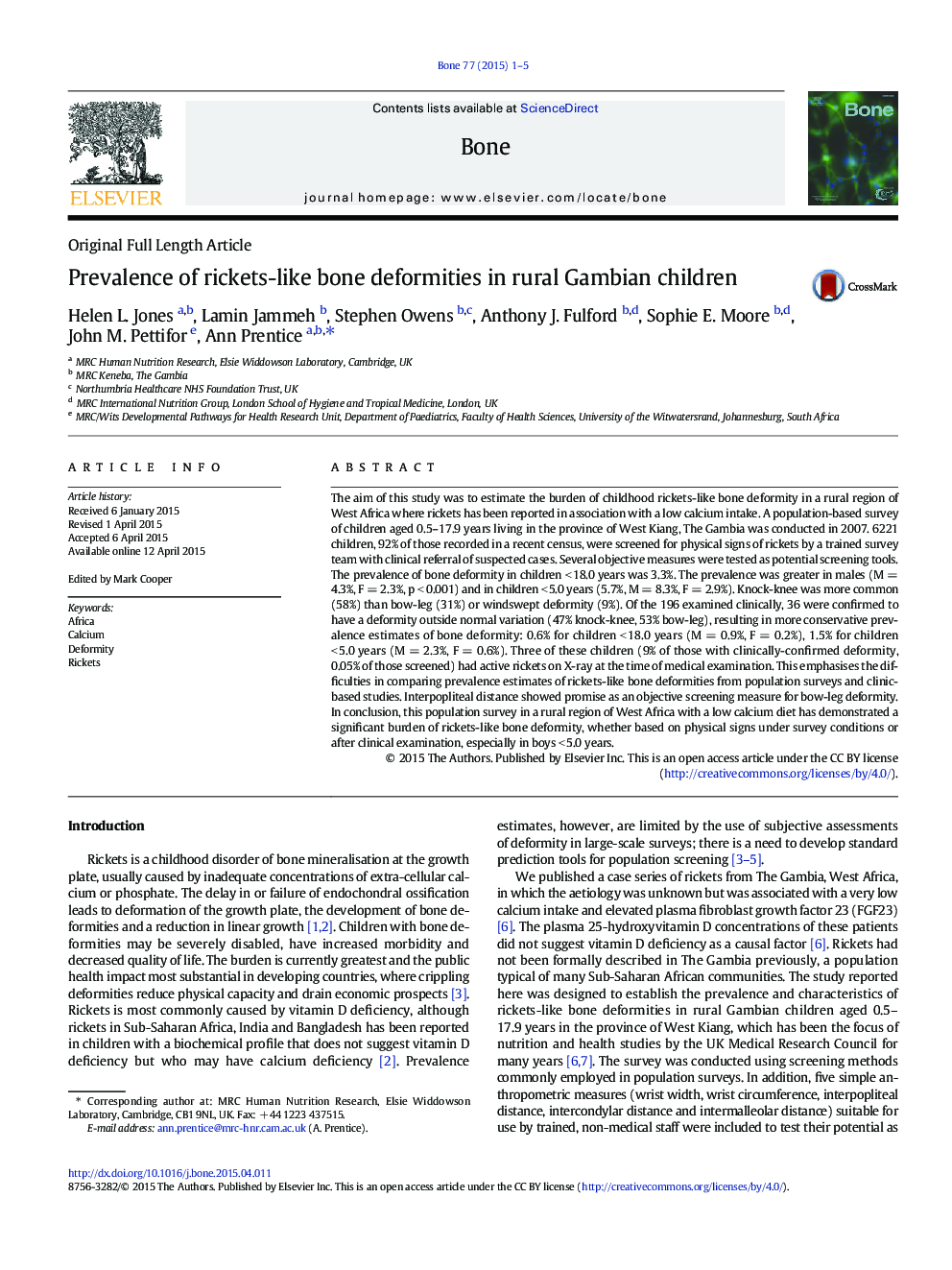| Article ID | Journal | Published Year | Pages | File Type |
|---|---|---|---|---|
| 5889680 | Bone | 2015 | 5 Pages |
â¢Nutritional rickets is reported in many parts of the world; calcium deficiency is suspected in some African and Asian countries.â¢The burden of disease at the population level is largely unknown, especially in Africa.â¢Prevalence estimates in the literature are highly dependent on the methods used.â¢A 3.3% prevalence of rickets-like bone deformities was obtained in 6221 rural Gambian children aged < 18 years.â¢Of those screened, 3 (0.05%) had active rickets at the time of medical examination.â¢These prevalence rates were greater in children aged < 5 years (5.7%/1.5%) especially in boys (8.3%/2.3%).
The aim of this study was to estimate the burden of childhood rickets-like bone deformity in a rural region of West Africa where rickets has been reported in association with a low calcium intake. A population-based survey of children aged 0.5-17.9 years living in the province of West Kiang, The Gambia was conducted in 2007. 6221 children, 92% of those recorded in a recent census, were screened for physical signs of rickets by a trained survey team with clinical referral of suspected cases. Several objective measures were tested as potential screening tools. The prevalence of bone deformity in children < 18.0 years was 3.3%. The prevalence was greater in males (M = 4.3%, F = 2.3%, p < 0.001) and in children < 5.0 years (5.7%, M = 8.3%, F = 2.9%). Knock-knee was more common (58%) than bow-leg (31%) or windswept deformity (9%). Of the 196 examined clinically, 36 were confirmed to have a deformity outside normal variation (47% knock-knee, 53% bow-leg), resulting in more conservative prevalence estimates of bone deformity: 0.6% for children < 18.0 years (M = 0.9%, F = 0.2%), 1.5% for children < 5.0 years (M = 2.3%, F = 0.6%). Three of these children (9% of those with clinically-confirmed deformity, 0.05% of those screened) had active rickets on X-ray at the time of medical examination. This emphasises the difficulties in comparing prevalence estimates of rickets-like bone deformities from population surveys and clinic-based studies. Interpopliteal distance showed promise as an objective screening measure for bow-leg deformity. In conclusion, this population survey in a rural region of West Africa with a low calcium diet has demonstrated a significant burden of rickets-like bone deformity, whether based on physical signs under survey conditions or after clinical examination, especially in boys < 5.0 years.
